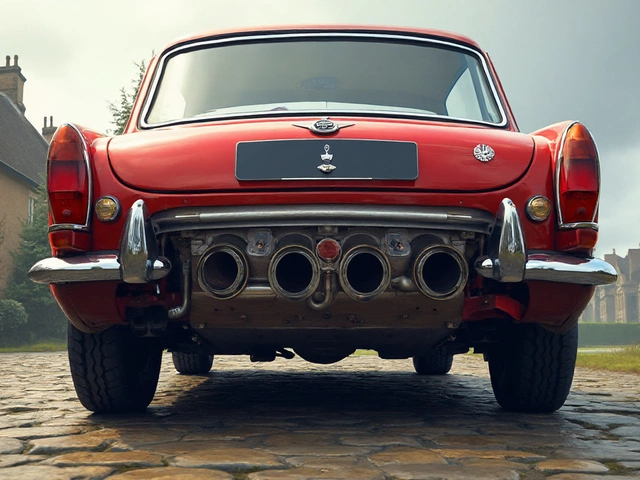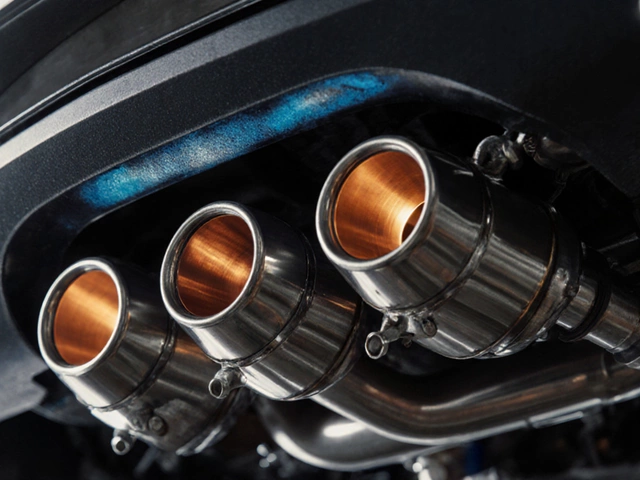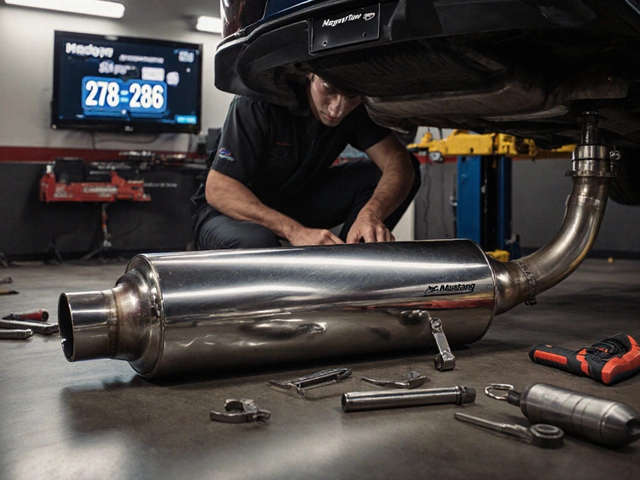You’ve probably heard the rumble of a sweet exhaust system and wondered if you’re missing out. Or maybe you’re eyeing horsepower numbers, thinking the secret is all in the pipes. Bad news first: picking the wrong exhaust size can wreck performance, fuel economy, and how your car sounds. Too small, and you choke the engine. Too big, and you kill the torque. Getting it just right? That’s when things get interesting.
What Does Exhaust Size Actually Do?
Let’s kill the myth: bigger is not always better. The exhaust system’s main job is to get burnt gases out of your engine fast enough to let air and fuel rush in for the next power stroke. The size of your exhaust pipe actually controls how quickly those gases can exit. When people talk about the diameter, we’re usually looking at the main exhaust piping right after your headers or manifold.
If you go too small, the gases can’t escape quickly enough and things get backed up. That’s like breathing through a straw while going for a jog, not ideal. Your engine struggles to make power as RPMs rise. But if you go too big, the exhaust loses speed. Suddenly, you get weaker scavenging, the process that helps pull gases out of the cylinder. That’s like opening both windows while you try to blow up a balloon – inefficient and hard work. Too big a pipe can result in a huge drop in low-end torque, making city driving a pain.
Now, it’s not just about flow. Exhaust size affects sound too. Smaller pipes deliver crisp, raspy notes, while big pipes create a deeper, boomier tone. If you’re after a specific sound, don’t ignore the diameter, or you’ll end up with a car that sounds nothing like you hoped.
There’s real money at stake here. People spend hundreds on shiny systems, but a wrong-size exhaust can sap horsepower and empty your wallet fast. In fact, some dyno tests published by Car Throttle back in 2022 showed that switching from a 2-inch to a 3-inch exhaust on a stock 2.0L engine dropped usable torque by more than 10%. That’s not a small number for everyday driving.
So picking your size isn’t just some geeky bit of trivia. It’s the backbone of both your power curve and your wallet. The key is balance, not just chasing the biggest pipe on offer. Ready to get more scientific about it?

How to Measure and Choose the Right Exhaust Size
This is where most people get tangled up. If you just copy your mate’s system or listen to armchair experts, you’ll get burned. Here’s how the pros (and smart DIYers) actually figure out the right size.
First up: know your engine size, power output, and how you use the car. No need for a PhD, but you do want accuracy.
- Engine displacement: Think 1.6L, 2.0L, 3.0L, etc. The more air the engine moves, the bigger the pipe needed.
- Horsepower and RPM: Are you driving a 1.2L Fiesta or a turbocharged 400 hp monster? High power means more gas to move out.
- Intended use: Want to cruise every day, hit the track, or just make more noise?
- Mods: Running a turbo or supercharger? Those systems push out more exhaust than a naturally aspirated engine of the same size.
There’s an old-school rule of thumb for naturally aspirated engines: for every 100 horsepower, use about 1.5 inches of exhaust diameter per exhaust pipe. For most daily drivers (say, 100-200 hp), a single 2.0-inch exhaust works well. As you approach 250 hp, step up to 2.25 or 2.5-inch. Over 300 hp? Think 2.75-3.0 inches, but only if you’re focused on top-end power all the time.
Turbocharged engines are greedier. They can handle larger exhausts because the turbo helps force gases out. A popular street setup is a 3.0-inch pipe for cars making 300+ hp. For anything below that, a 2.5-inch usually makes more sense unless you’re chasing those wild high-RPM pulls.
Check out this cheat sheet based on actual dyno-proven recommendations. These numbers work for single-exhaust street cars where daily driveability matters.
| Engine HP (Estimate) | Recommended Diameter (inches) |
|---|---|
| Up to 150 hp | 1.75" - 2.0" |
| 150-225 hp | 2.0" - 2.25" |
| 225-325 hp | 2.25" - 2.5" |
| 325-425 hp | 2.5" - 2.75" |
| 425+ hp (Turbo) | 3.0"+ |
Be honest about your car’s output – people love to exaggerate, but an oversized exhaust on a low-power engine just makes it sluggish and loud, with no real power gain. The key is matching your system to your real-world setup, not just what looks good on a forum.
If you want to get technical, some speed shops use equations like:
- Exhaust Area (in square inches) = (Engine HP × 0.034)
So for a 200 hp car, you’d want roughly 6.8 square inches of cross-sectional area. For a round pipe:
- Diameter (in inches) = sqrt[(Area × 4) ÷ π]
If that looks confusing, most people stick to established sizes like above. But if you’re doing a wild custom build, crunch the numbers.
Pay attention to the rest of your system. Choke points – like a narrow downpipe on a turbo car, or pinched bends in cheap exhaust kits – will wreck performance no matter how big your main pipes are. Mandrel-bent tubing (which keeps a constant diameter around bends) flows way better than crush-bent pipe.

Extra Tips, Myths, and Sound Facts
An exhaust isn’t just about power. Think about MOT requirements, your neighbours, and emissions. UK laws for road cars are pretty clear: too loud or too smoky, and you’ll fail your test. There’s no sense spending a fortune on a system that’s illegal the moment you turn the key.
If you want a bit more volume without waking the neighbours, look at muffler styles. Some straight-through sports mufflers amp up the noise even on smaller pipes, while well-tuned boxes can keep things quiet with a sporty edge. Just swapping your muffler alone won’t fix underlying flow issues caused by a mismatched pipe diameter, though.
Material matters too. Stainless steel systems last longer and look better, but cost more. Mild steel is cheaper but rusts quick in rainy places like Manchester. If you’re in it for the long haul, stainless costs less in the long run.
If you want to avoid drone (that booming, headache-inducing noise at certain speeds), pipe size matters. Pipes that are too big can resonate at motorway speeds, making even short journeys painful. Aftermarket shops often test different combinations of pipe, mufflers, and resonators to hit that sweet spot between power and livable sound. Some people add a resonator or try a different tip shape for a final tweak. There’s a reason you’ll see tuners literally crawling under their cars with tape measures and sound meters.
On the myth-busting front, remember: dual-exhaust setups only help if your engine can actually breathe enough to fill both pipes. Slapping on twin tips for looks won’t change anything if you’re starting with a small, slow-burning engine. If you’re running a big V6 or V8, true duals with appropriate size can make a difference, but fake duals just add weight.
Towards the end of the day, don’t buy into marketing. Flow numbers and dyno charts from real shops tell the proper story. Ask for before-and-after results if you’re buying a kit. If you want to go DIY, measure twice and double-check fitment before cutting the old system off—nothing stings more than spending a weekend under your car cursing because your new pipes don’t fit around the rear axle.
So, the secret? Use your car’s specs, honest driving goals, and a proven size guide. Don’t just roll with what the loudest voice at the pub reckons. Next time someone swears bigger is always better, ask them what their dyno numbers look like — you’ll spot who actually knows their stuff in a hurry.


